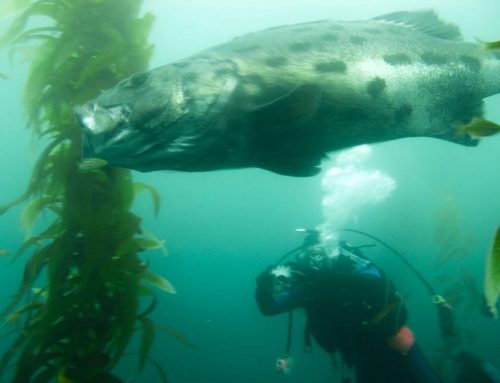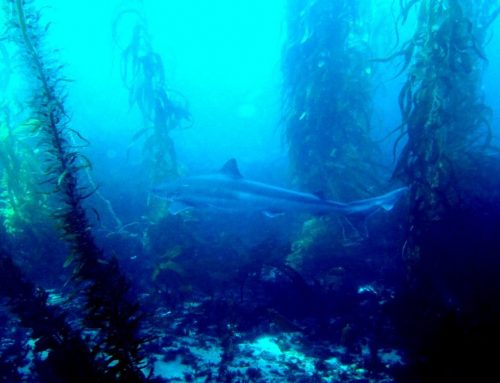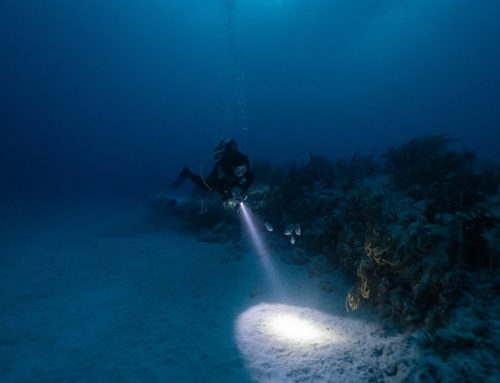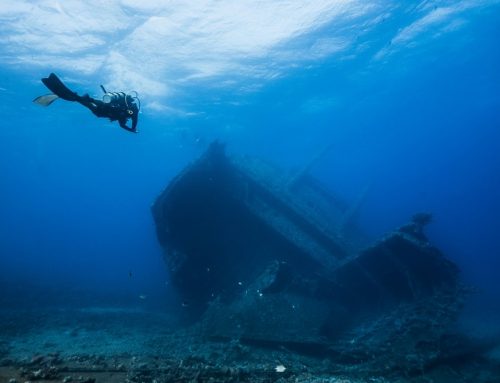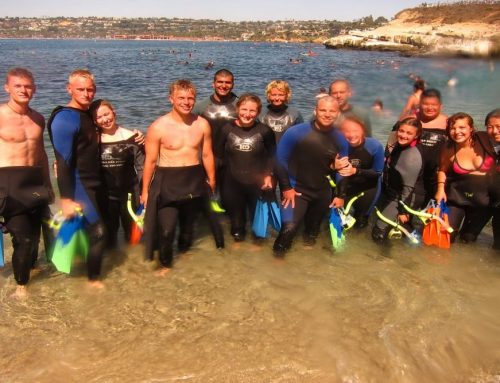The BMI qualification to dive with us is not a training agency requirement of NAUI or listed in the standards and procedures of any dive training agency. It is a safety requirement based entirely on our specific type of diving experience(s) in the beautiful La Jolla Cove Ecological Reserve, the California coastline, and Rod Watkins’ over 51 years of continuously leading guided dives on almost every beach on the coast of California, all of its offshore Channel Islands, and many sites around the world.
The BMI requirement is in place because Scuba San Diego Inc desires to keep its perfect safety record. It is the only reason we have the BMI statement and requirement. Our company has been training divers and guiding divers around the world for over 51 years. BMI is not an issue in the vast majority of dive site situations.
This because a person that does not meet the requirement is, for the most part, usually OK falling or jumping off a boat in calm tropical seas on a couple of dives while on vacation. This diving scenario is, without exception, usually when there are no waves pounding the shoreline, or sites with soft sandy beach, or offshore current to deal with.
A doctor’s clearance to dive does not guarantee a person’s ability or safety to dive at all. It just says, “You look OK.” The doctors “OK” is often given without the doctor’s firsthand knowledge of the physical and mental stamina required to dive and snorkel in San Diego waters on any given day. Too often the examining physician is not even a scuba diver. If there is any doubt about your diving health we recommend contacting Divers Alert Network (DAN).
A complicating factor is the dive shop or dive charter operators desire to make money without regard to the dive applicant’s ability to enjoy the dive. All training agencies have a mandatory swim test that must be passed before being allowed into a basic scuba class. I personally have witnessed even dive certification classes taking place with applicants who you can tell never passed the required swim competency test. The shop has to pay rent, insurance, cost of goods, payroll, utilities etc. and this often mitigates the shops desire to tell a applicant they have to come back when they can pass the swim competency test. In our long experience it is clear many “C” card carrying divers never passed that mandatory swim “qual” before being allowed into a class or being certified.
In our diving scenarios we enter and exit from the soft sandy shoreline at the La Jolla Cove Ecological Reserve. This is a world famous dive site as it is the oldest marine reserve in the western United States. It is off limits to all powered craft. Hence, there is no easy entry into, or exit out of the water unless it is the unusual dead-flat-calm day. There is no platform such as a boat to fall into the water from or get out from. If the divers are fit to dive our conditions entering and exiting our waters is not a problem for even beginning divers with little or no experience after being “certified”.
La Jolla Cove is also famous to us locals for an amazing number of Lifeguard assists and rescues of divers not accustomed to swimming through surf, dealing with strong tidal currents (you can’t drift and be picked up at the end of the drift dive) and long shore currents. I have trained several San Diego City Lifeguards up to Dive Master level and have heard some senior guards complain about the lack of training of some of the divers they see enter and exit the water in front of them. We are at “The Cove” almost every day and see other divers that are so poorly trained that we are amazed there are not more fatalities in diving.
Our awesome San Diego City lifeguards are constantly rescuing divers in need of assistance and most of those rescues are with people exceeding a BMI index of 30. Most of these divers obviously never passed their swim qual, and physically unable to dive safely here. Incredibly, many of these rescues are not even out on the reef or in our amazing kelp forest but at the entry/exit point.
This is where at a minimum, a person is wearing a 7 mm full wet suit, weights (depending on their BMI) from 12 to 28 lbs in a belt or integrated, a 45 pound cylinder, 5 pounds of breathing system, etc. risks falling or getting knocked down by surge, waves, or might lose footing due to soft sand. Will this person experience hyperthermia standing around in the sun in a 7mm wet suit? Will this person be able to climb back up the 50 or so steps leading up the steps off shoreline?
When the diver gets knocked down at the shore either at the beginning of the dive or after becoming spent during the dive it is extremely difficult if not impossible to get up unassisted and many have gone to the hospital as a result of the battle to get up during which they get pushed in front of the steps and rocks and severely bashed around. They being bashed on the rocks, the steps, or being tumbled with all that weight on is not a “fun” dive experience. Even Lifeguards have been injured helping these divers. Once they are down in the entry or exit point’s soft sand they almost never can get up without assistance from our guide or a combination of our guides and the lifeguards.
Sometimes a diver will call for an explanation of the BMI requirement. We will ask them what their height and weight are and then ask what they do for a living, how many dives they’ve done, what types of conditions they normally dive in, boats, shore, tropical, dry suit, wet suit, temperate water, diabetic (many above 30 BMI are Type II diabetic or pre-Type II diabetic), how many dives they did in the last 12 months, etc. etc. We need to access their likely ability to enjoy our kind of diving and whether it is safe for them. We really have to have them “enjoy” the experience and be safe. If the prospective diver is a desk jockey or UPS delivery person it helps us get answers to vital questions. Telling us you’re an experienced diver with a medical clearance does not answer the question, “Will this person enjoy this dive and be safe?” which is of the utmost importance to us. Emailing us that a BMI is not a standard PADI S&P or some other agency requirement is a meaningless comment to us.
A couple of actual cases in Point:
- About 5 years ago while observing a dive class being conducted by a local dive shop at La Jolla Shores (inside the reserve) I noticed a gentlemen about 5’9 ” (175 cm.) and at least 270 lbs (123 kg.) standing around on a hot morning in San Diego. He was suited up in a 7 mm wet suit in full gear ready to enter the surf zone. His instructor had approximately 8 students entering the water. When the first wave hit he was the only student that went down. But, he had no reaction to going down. In fact he had passed out. The lifeguards were there immediately and began CPR continuously until the ambulance arrived. He was pronounced dead at the scene. The coroner found that he did not drown. He died of Hyperthermia! Understandable based on his BMI and the equipment he had to wear standing in the sun.
- A Diver called wanting to know, “What the heck was the BMI requirement.” He said he had only tomorrow to dive and he said he never heard of such a ridiculous requirement. He said he had over 400 some odd dives around the world and was a semi-professional photographer. I asked him what his height at weight were. He responded, “I am 5′ 10 and 285 pounds why should that matter.” I said, “Sir this is a rigorous dive and you will not enjoy it and………” he hung up on me before I could recommend a local boat dive run to the wrecks or Coronado Islands or a “private guide” for his dive.The next day one of my dive masters called me and asked if I had heard about the Jet Ski rescue of a diver about a mile off Point La Jolla. When I queried my DM about the incident he said a competitor’s dive master had a guy out (one on one) and that guide couldn’t tow him in once they got outside Point La Jolla. That shop guide abandoned the diver to return to shore and get lifeguard assistance on getting the diver back in. The Life Guard Service sent a rescue jet ski out from 2 miles away. When the Life guard Jet Ski returned some time later after a successful search for the diver they deposited a huge guy with a large camera on the La Jolla Cove beach. I’m not psychic but I’m pretty sure that was the guy that hung up on me.
I hope this answers many questions related to the BMI requirement for Scuba San Diego Inc. If you would like more information, do not hesitate to contact us.
Safe diving always,
Rod
Rod Watkins, NAUI Instructor 1315
Scuba San Diego, Inc.
